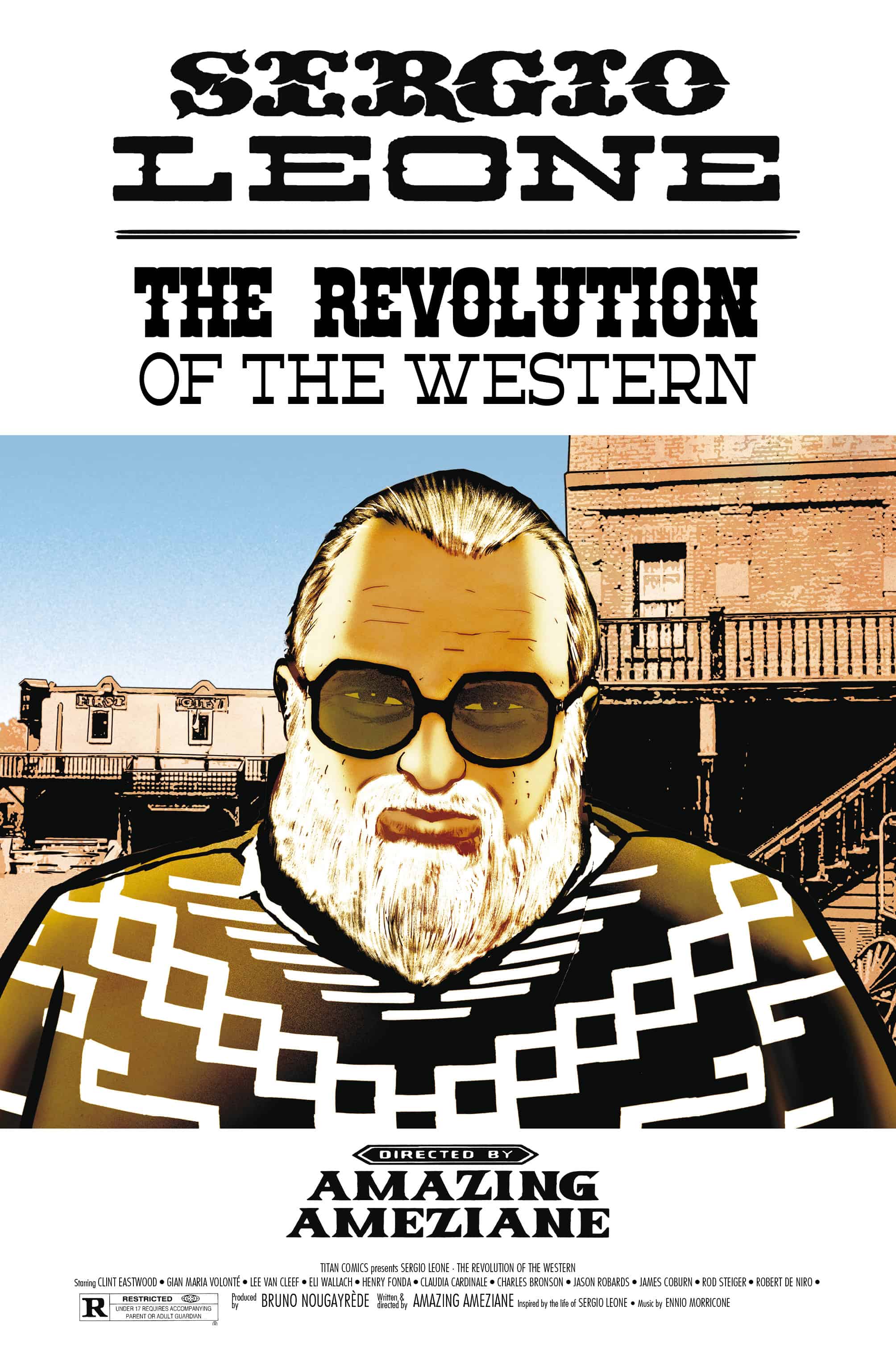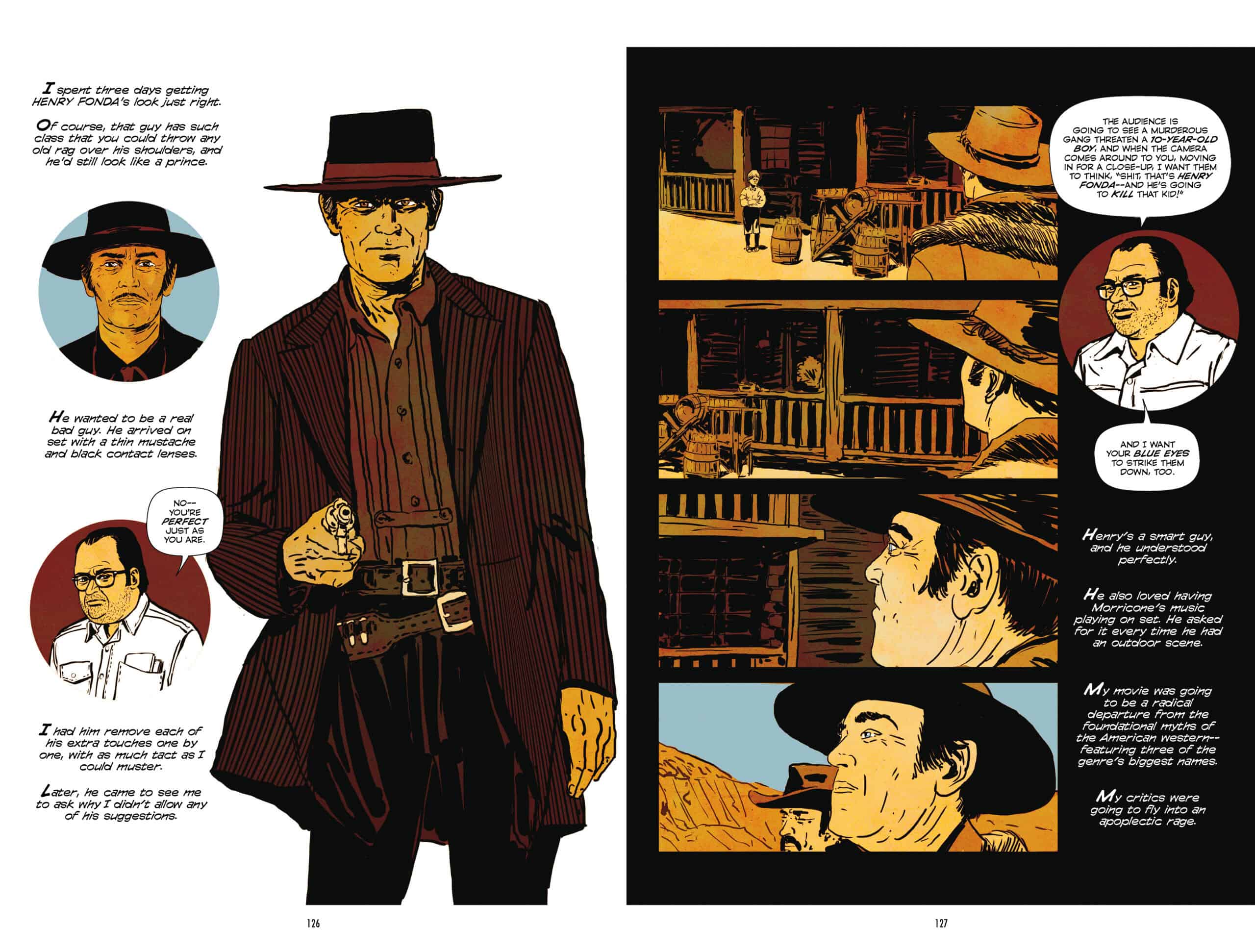Sergio Leone - The Revolution of the Western

Recap
Based on the lives and films of acclaimed cinema icons, this book focuses on the legendary Sergio Leone of The Good, the Bad, and the Ugly fame. Following the story of the man behind the movies, Sergio Leone shows the insight behind the critically acclaimed Dollars Trilogy director and takes a look at both the impact of his movies and the narrative of his life from his cinematic viewpoint.
Review
Sergio Leone changed westerns forever. This classic genre was dying when Leone delivered A Fistful of Dollars in 1964. The first of his “spaghetti Westerns,” Leone based the movie on Akira Kurosawa’s Yojimbo. The first of Leone’s “Dollars Trilogy,” A Fistful of Dollars featured Clint Eastwood in his first starring role. Leone would follow this up with more Western classics, including Once Upon a Time in the West and The Good, the Bad, and the Ugly. Sergio Leone: The Revolution of the Western dives not just into these seminal movies, but the life of the legendary director who made them.
Writer/artist Amazing Améziane opens Sergio Leone: The Revolution of the Western with a prologue describing his introduction to The Good, The Bad, and the Ugly and, through that, Sergio Leone. This brief prose section, roughly a page in total content, then gives way to an engrossing illustrated background of Leone and his movies.
Drawing on a variety of books and films, Sergio Leone: The Revolution of the Western tells Leone’s story largely in his own words as a comic character speaking to the reader. But this is far more than an illustrated Leone talking to the reader for almost 200 pages. Améziane varies art styles throughout the book. Leone himself has a low detail, somewhat cartoonish appearance. He’s a fun character visually, very inviting every time he is on the page.
Much of the book’s text is placed alongside the art, and this is where Ameziane’s work becomes most expressive. When describing Leone’s childhood in Italy, Améziane leans into realism for locations and some people. Other parts of Leone’s story are depicted in black and white panels featuring characters depicted only in blank profiles.

Settings and characters receive a truer depiction during the retelling of Leone’s experiences making his movies. Améziane doesn’t strive for a hand drawn or painted photorealism, but it is not the broad cartoon-like style used for Leone and the other filmmakers quoted for the book. It’s the most impactful art style here.
Améziane refrains from coloring until the second part of the book when the story turns away from Leone’s early biography and to his filmmaking. The transition from an entirely grayscale scheme intensifies the storytelling. Though Sergio Leone: The Revolution of the Western concerns itself with Leone’s entire life, the movie making history is where it gets into the greatest detail and is ultimately the book’s driving force.
Colored sequences vary between a flat and two dimensional style to a heavily shaded, moodier one. The overall color scheme leans heavily on sepia tones accented with red hues. This works well thematically with the book’s subject of Leone’s Westerns.
The most striking image in Sergio Leone: The Revolution of the Western comes during the detailing of The Good, the Bad, and the Ugly. Améziane depicts the bridge explosion from the movie (actually the first, unplanned explosion) on a two page spread. Vibrant oranges, sepias, and reds fill the pages. Military fortifications and troops are drawn throughout the image. It’s one of many images that make the illustrated history worthwhile.
This book may be illustrated but it is full of text. Bowes does a good job keeping everything well organized, easy to follow, and out of the way of the most impressive artwork. Though full of engaging art, easy to follow text is critical here, and Bowes succeeds in this area.
Final Thoughts
Ameziane delivers fascinating and easy to digest insight on Sergio Leone and his work with Westerns. The book is an engaging read with easy to follow text and art that makes it a page turner. Fans of Leone’s work, Westerns in general, and movie making overall owe it to themselves to pick up Sergio Leone: The Revolution of the Western.
Sergio Leone – The Revolution of the Western: A Movie Making Legend, Illustrated
- Writing - 9.5/109.5/10
- Storyline - 8/108/10
- Art - 9/109/10
- Color - 7/107/10
- Cover Art - 8/108/10





